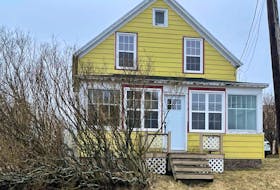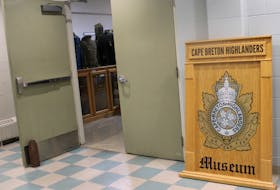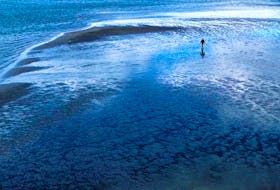HILDEN, N.S. — A large number of snappy patients have arrived at the Cobequid Wildlife Rehabilitation Centre recently.
So far this year 11 injured turtles, the majority being snapping turtles, have been brought in.
“Ten of them were hit by cars,” said Dr. Jessica Rock, a veterinarian who volunteers at the centre. “A lot of them came from within a 30-minute drive, and the vast majority had shell injuries. We start with an assessment and if they’re too severely injured we humanely euthanize them. It’s surprising what a turtle can recover from though. Snapping turtles are sometimes hit and dragged by a car, but live.”
Painted turtles and a wood turtle have also come in recently. While most come in with damage to the carapace (upper shell), wood turtles have such strong shells they’re more likely to have injuries to their plastron (underside).
Blanding’s turtles have received care at the centre in the past, but no members of the species have been brought in this year. It is the rarest turtle in the province and is classed as threatened.
“A lot of the time it’s a matter of keeping the injured area clean and bandaged with a special type of bandage until the shell can heal,” said Rock. “Sometimes they need a shell cast to keep things stabilized.”
She believes people might be taking more steps to help turtles now because people are aware that they’re at risk.
All four species of turtle in Nova Scotia are protected and it’s illegal to interact with them or their nests.
“Some think that because they have shells it’s no big deal if they’re hit, but it can do serious damage,” said Rock. “It’s important that people watch for turtles on, and near roads, and get them help if they’re injured.
“They aren’t as slow as people often think, but they are slow.”
A large number of the turtles that arrived this year were injured in Highway 289. Rock and Dr. Kayla Collins both provided veterinary care for them.
“Turtles are just so cute,” added Rock. “Wood turtles are especially cute and beautiful, and snapping turtles look like something plucked from prehistoric times. Blandings and painted turtles are very interactive. Turtles provide no shortage of fascination for me; they’re lovely little creatures.”
-
About snapping turtles
Shell length can be more than 50 cm but 22 to 35 cm is usual
Cannot protect itself by drawing into its shell because the shell isn’t large enough
Neck can reach halfway back to its tail
In water they swim away quietly
Can give a painful bite but not as bad as often thought. According to a study in the Journal of Evolutionary Biology, a snapping turtle's jaw strength registered between 208 and 226 Newtons of force. A human’s average a bite force is between 300 and 700 Newtons when biting with molars.
About Eastern painted turtles
Most common and colourful turtle in N.S.
Most often found in southwestern part of the province
Green with yellow and red markings
Often seen basking on rocks or logs
Shell length is usually 13-17 cm
About wood turtles
Bask on muddy river banks
Listed as vulnerable species
Dark on top with orange undersides
Found in slow-moving streams, woodlands and fields
Shell length usually 19-21 cm
About Blanding’s turtles
Shell is dark with yellowish streaks
Favourite habitat is plant-filled coves and bogs of lakes
Classed as a threatened species
Sightings should be reported to Turtle Watch of the Nova Scotia Museum
Shell length 18-23 cm








